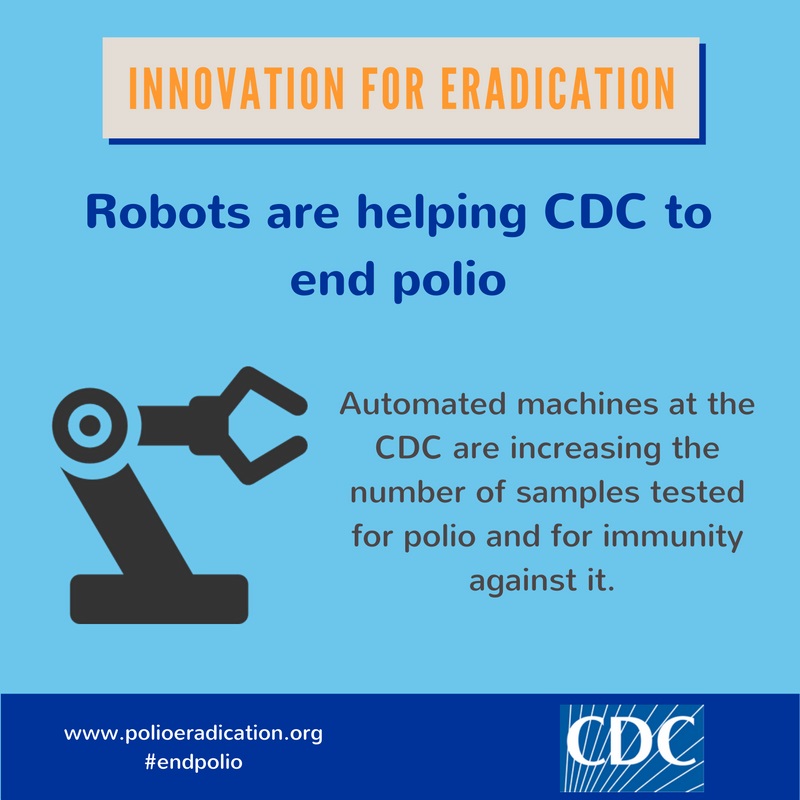Innovation Series: How Robots Are Helping to End Polio
Automated machines at the CDC are increasing the number of samples tested for polio and for immunity against it.

Keeping an eye on polioviruses and ensuring that children are protected around the world is a big job – and recently, we’ve enlisted robots to help us out.
At the US Centers for Disease Control and Prevention (CDC), the Population Immunity Team uses automated laboratory machines to test blood samples for poliovirus antibodies through a process called serological testing. These robots have significantly increased the number of samples able to be processed – from 20,000 – 30,000 tested collectively in the past two decades to 100,000 samples in 2012 alone. These machines have not only accelerated the rate of sampling, but have also led to more accurate and higher quality test results.
What the tests can tell us
Serological testing is used to assess how well a population is immunized against the three strains of polio, providing important information about the effectiveness of immunization campaigns and new vaccines undergoing preclinical and clinical trials. If antibodies are detected in a healthy person, we can conclude that they are immunised against polio. If no polio antibodies are detected, this indicates that the person either has not been immunised or that they have a compromised immune system.
Serology can also help determine if a person has polio, but it cannot serve as a diagnosis on its own. Since the tests cannot differentiate between antibodies induced by immunisation and antibodies induced by an infection, accurate medical history is important for interpreting these tests.
Diagnostics on the horizon
Rapid identification of possible cases is important to stopping the spread of poliovirus. In addition to the automated tests, the CDC is developing direct diagnostics, or ways to test for polio directly from stool samples. This will help to correctly identify polio cases and shave off about 10 – 14 days from the time it normally takes to get a test result.
The future of disease surveillance
High quality surveillance systems, using innovative technology like these robots, are key to ensuring that we finish the job and end polio for good.
These robots have not only helped us to get smarter about polio, but also have the potential to benefit other disease programs, including for measles, Zika and vaccine-preventable diseases. By continuing to innovate in disease surveillance, we’ll be able to better control epidemics of the present and future.












